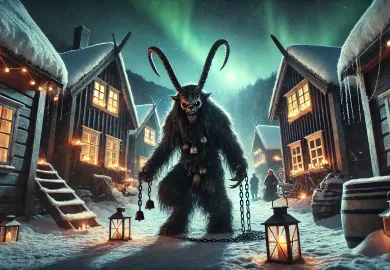
The Colosseum in Rome stands as one of the most iconic monuments in the world, symbolizing the grandeur and complexities of ancient Rome. A site of thrilling gladiatorial games, public spectacles, and historical drama, it has captured the imagination of millions throughout history. Today, the Colosseum continues to attract visitors from every corner of the globe, not only for its architectural magnificence but also for the rich history embedded in its stones.
The Colosseum: A Marvel of Ancient Engineering
Constructed between 70-80 AD, the Colosseum, also known as the Flavian Amphitheatre, is a testament to the ingenuity of Roman engineering. It was commissioned by Emperor Vespasian of the Flavian dynasty and completed by his son Titus. Built with a combination of travertine limestone, concrete, and tuff, the structure could hold between 50,000 to 80,000 spectators, depending on the configuration of events.
Unlike many of the modern stadiums we see today, the Colosseum’s design was a groundbreaking feat. Its elliptical shape, spanning 188 meters long, 156 meters wide, and reaching a height of over 48 meters, ensured that every spectator had a good view of the action. Furthermore, the innovative system of arches allowed for the quick evacuation of large crowds, a feature that speaks volumes about the Romans’ understanding of space and functionality.
The Colosseum’s floors were made of wooden planks covered in sand, which not only made it easy to clean after bloody events but also helped prevent injuries. Beneath this floor was the hypogeum, a vast network of tunnels and cages that housed gladiators and wild animals. These subterranean passageways were another example of Roman innovation, allowing animals and fighters to be brought into the arena through hidden trapdoors.
Gladiatorial Combat: The Heart of Roman Entertainment
When people think of the Colosseum, gladiatorial combat immediately comes to mind. These brutal contests were a central form of entertainment in ancient Rome and often involved slaves, prisoners of war, and condemned criminals. Gladiators, trained in special schools known as ludi, were forced to fight to the death or until one combatant was unable to continue. Despite the brutality of the spectacle, gladiators were often celebrated like modern-day athletes, gaining fame and sometimes even fortune.
Events in the Colosseum were often sponsored by emperors or wealthy citizens as a way to gain popularity and support from the masses. These events weren’t just limited to one-on-one combat. There were elaborate reenactments of famous battles, mythological dramas, and even naval battles when the Colosseum’s arena was flooded with water, a feat made possible by an advanced hydraulic system.
Despite the violence, the games held significant cultural importance in Roman society. They were seen as a way to demonstrate Roman values such as strength, discipline, and honor. The spectacle also served a political purpose, offering a way to appease the general populace and distract them from the hardships of life in ancient Rome.
The Changing Purpose of the Colosseum Over Time
While the Colosseum is most famous for its gladiatorial games, its use and purpose evolved significantly over the centuries. After the fall of the Roman Empire in the 5th century AD, the Colosseum fell into disuse. Natural disasters, including earthquakes, caused significant damage to the structure, and during the medieval period, parts of the Colosseum were repurposed as a fortress by noble Roman families.
In the Middle Ages, large portions of the Colosseum were also quarried for building materials, and it became a site for various commercial and residential purposes. It wasn’t until the 18th and 19th centuries that the Colosseum began to be recognized for its historical value. The popes played a key role in preserving what remained of the structure, and extensive restorations began to take place.
The Colosseum has also taken on a symbolic role in modern times. In recent decades, it has been illuminated as part of various global campaigns, including those opposing the death penalty and violence. This transition from a site of bloodshed to a monument symbolizing peace and human dignity is a testament to the enduring significance of the Colosseum across different epochs.
Visiting the Colosseum Today: A Journey Through History
Today, the Colosseum stands as a UNESCO World Heritage Site and attracts millions of visitors each year. As you approach the structure, you can’t help but feel awed by its sheer scale and grandeur. Walking through its towering arches and into the arena itself transports you back to a time when this place was the epicenter of Roman life.
Visitors can explore various parts of the Colosseum, including the underground chambers of the hypogeum, where gladiators once prepared for battle. The upper tiers offer stunning panoramic views of both the arena and the surrounding city of Rome, giving a sense of the Colosseum’s role as a monumental part of the cityscape.
A visit to the Colosseum isn’t complete without learning about the stories and legends that surround it. From the famed gladiators like Spartacus to the Christian martyrs who were said to have perished here (though this remains debated by historians), the Colosseum is not just a structure of stone—it’s a living testament to the tales of human endurance, cruelty, and spectacle.
As you wander through the Colosseum’s ancient passageways, it’s impossible not to reflect on the legacy of Roman civilization and its lasting influence on the world. From its architecture to its role as a symbol of imperial power, the Colosseum continues to capture the imagination of those who visit, just as it did for those who sat in its stands centuries ago.
In conclusion, the Colosseum in Rome is not only a marvel of ancient engineering but also a site rich in history and cultural significance. Whether you are drawn to its architectural prowess, its role in ancient Roman society, or its evolving symbolism throughout history, the Colosseum remains one of the world’s greatest historical treasures.
The image above provides a picturesque view of the Colosseum as it stands today, surrounded by the modern city but still retaining its awe-inspiring presence. The blend of ancient and contemporary elements around the structure reminds visitors of Rome’s unique position as a city where history and the present day coexist in harmony.








